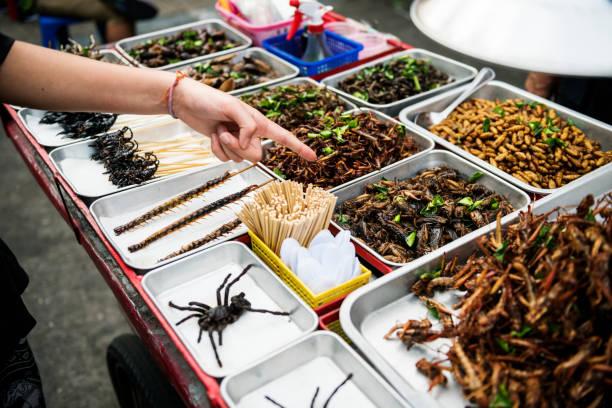The need to find sustainable and alternative sources of protein has arisen due to the increasing need for animal feed on a worldwide scale, which is a result of population growth and rising meat consumption. With so much to offer in terms of environmental and animal health advantages, edible insects have become a viable alternative. Using insects as animal feed not only solves the problems with traditional feed sources but also fits in with sustainable livestock production methods that lessen the environmental impact of the industry.
- The Insects’ Nutritious Value
High-quality proteins, vital amino acids, lipids, vitamins, and minerals abound in insects, which makes them an incredibly nutrient-dense choice for animal feed. Crickets, mealworms, and larvae of the black soldier fly are among the often utilized insect species. The high protein content of these insects frequently equals or surpasses that of conventional feed sources like fishmeal and soybean meal. For example, black soldier fly larvae are perfect for diets containing fish, chicken, and swine since they are high in calcium and other minerals and contain up to 45% protein.
- Advantages for the Environment
The fact that edible insects have little to no negative environmental effect makes them an excellent choice for animal feed. Compared to traditional cattle, insects require a great deal less area, water, and feed to generate the same quantity of protein. Insects may also be reared on organic waste products, such leftover food and agricultural byproducts, which closes nutrient cycles and reduces waste. Because of this, insect farming is a great illustration of a circular economy in action. Insect farming also helps to mitigate climate change since it produces less greenhouse gasses than conventional animal production.
- Practical and Economic Aspects
Another important element propelling insect farming’s acceptance in the animal feed sector is its economic viability. Insects are a competitive alternative to traditional protein sources because they can be mass-produced fast and with very little resource input. Furthermore, being able to cultivate insects locally lessens reliance on imported feed components, stabilizing costs and boosting regional economies.
Practically speaking, adding insects to animal feed has improved the development, health, and general performance of the animals. Research has indicated that the inclusion of insect protein in cattle, poultry, and aquaculture diets can boost immunological responses, improve gastrointestinal health, and increase feed conversion efficiency. This means that animals will be healthier, which might lead to increased harvests for farmers.
- Obstacles and Prospects for the Future
Even while edible insects have a bright future as animal feed, there are still a number of obstacles to overcome. Further development is needed in the areas of regulatory frameworks, customer acceptability, and the scalability of insect farming operations. Widespread acceptance of insect-based feed products also depends on ensuring their uniformity and safety.
To sum up, edible insects are a wholesome, affordable, and sustainable replacement for conventional animal feed. Future food security and sustainability goals may depend heavily on the incorporation of insects into animal feed systems as the world’s population continues to rise and environmental concerns develop. Edible insects may find widespread use in animal nutrition with greater advancements in science, technology, and funding, which would strengthen and expand the food chain.



